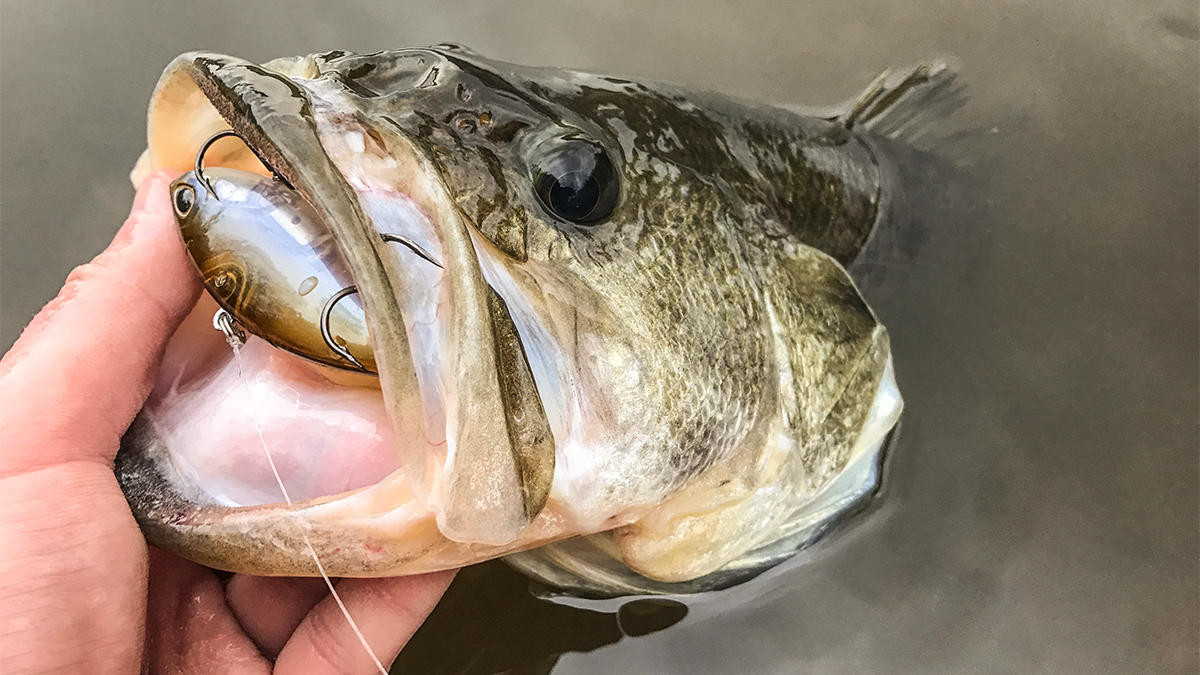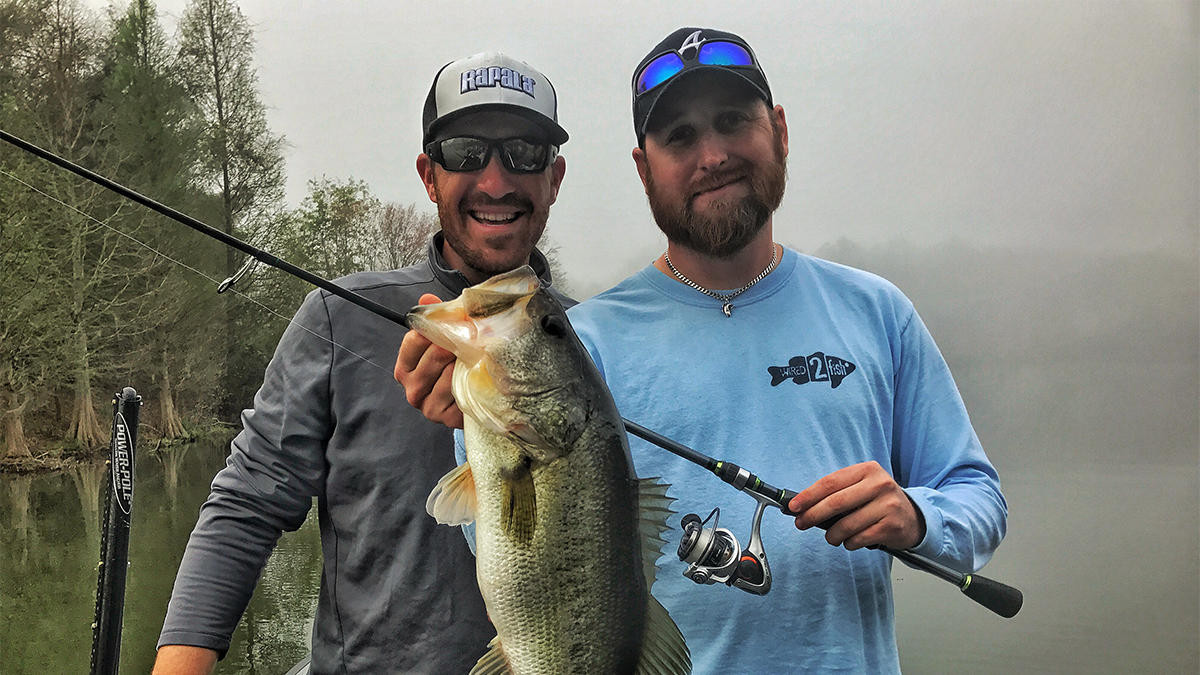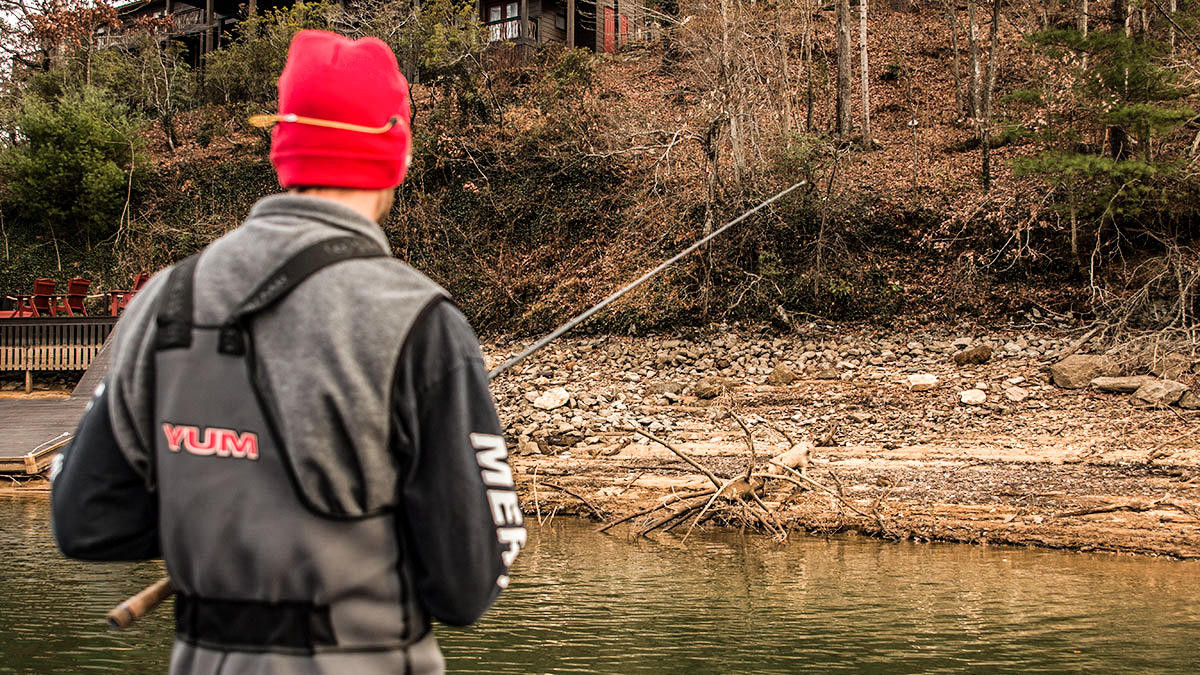This is a weird time of year for bass fishing and if I’m being totally honest, I’m not a gigantic fan of it. The deep, summertime bass aren’t really grouped up like they have been for the last several months and the shallow bite is dwindling as the bluegill begin vacating the shallows. Some folks call this a transitional stage but I just call it downright frustrating. It’s just not very fun to go fishing for a full day and catch a 12-pound limit of bass. It may be different in your area but where I live, this time of year is a real snoozer.
But something beautiful happened last week. Standing on the front deck of my old bass boat, with sweat dripping down my back, I felt the first cool breeze I’ve felt since March. As the wind hit my face, swayed the pinetrees and nearly blew the ballcap off of my head, I knew the first cold front system of the year was approaching. I hadn’t even checked the weather lately, so it was a total surprise to me. But some sort of front was coming and I could tell it was going to change the bass fishing in a big way.
In retrospect, it was a tease as it always seems to be in September. We enjoyed a beautiful three or four days of 50-degree nights and you couldn’t have peeled me off my front porch in the evenings; it was such a relief from the relentless Georgia heat.
Although short-lived, this cold front made the bite very different. So I started making a list of things that I think will help you when you experience that first cold front of the early fall. I won’t be too wordy with things, so hang with me and try these little tips the next time Mother Nature randomly whacks you in the face with cooler weather.
The mornings will be tough, so look for the sunny banks
As the aforementioned cold front was making its way towards my area, the tall pines and large oak trees on our property were swaying like they were on some sort of amusement park ride. I walked inside and told my wife that the fishing was going to be tough the next morning. I expected high barometric pressure, bluebird skies and gusty conditions. Sure enough, that’s what I was met with the next morning.
There’s no doubt that these kinds of mornings are tough; you simply can’t launch your boat and expect to catch 20 bass by lunchtime. Can it happen? Of course, it can. But in my personal experience, it’s fairly unlikely. That cold front essentially hits those bass in the face and they seem to become largely dormant.
When you launch your boat or even hop out of your truck to fish from the bank of a small lake or pond, I strongly urge you to make a concerted effort to target the sunny banks first thing in the morning. I’m certainly no scientist, but I think bass use these sunlit areas during a cold front just how we’d use a blanket when we’re cold. The water in these places can be a few degrees warmer than the rest of the lake or pond and while that might not seem like much to us, it can be an enormous difference for a bass.
For me, it’s tempting to start every morning with a fast-moving reaction lure such as a topwater or a crankbait; especially this time of year. But as I’ve become older and (hopefully) a little bit wiser, I’ve learned that using slow-moving, bottom-contact presentations can pay big dividends on the morning of a first cold front. The fish are going to be in the sunny spots but they still might be all jacked up from the sudden change in barometric pressure, so it’s important to understand that they probably won’t chase a fast-moving bait as much. So do your best to slow down, relax and drag something on the bottom. It’s not a guarantee but it has really worked well for me in the past.
Focus on hard cover
I’m very water temperature-oriented when fishing the first cold front of the year; as we discussed in the previous section, a single degree increase in water temperature can make all the difference in the world for a bass. They can be pretty finicky creatures when it comes to water temperature.
This is the main reason I like to target hard cover during these fronts. Hard cover tends to attract and retain heat better than soft cover such as vegetation. So I really like to target pieces of cover such as rocks, wood and especially metal boat and jetski lifts. That metal will warm up quicker than anything in the water and the bass will snug up to it and use it as a blanket all day long. It might sound a little weird but by gosh, it sure works.
Cold-front bass will still get around vegetation and what not but it still seems as if hard cover is the preferred option in this situation. Don’t be afraid to tick your bait off of these metal boat and jetski lifts, either. That small and subtle sound will often trigger these lethargic cold-front bass to bite out of pure reaction when they’d otherwise not feed.
This is when precise casts pay off
I always preach about the importance of accurate and quiet casts. I didn’t learn how to silently skip a jig or worm under a dock to impress people; I spent years perfecting it because it absolutely catches more bass. When the fishing gets tough as it often does during these early season cold fronts, excellent casting skills are worth their weight in gold.
I personally believe these cold-front bass are super spooky, meaning that if your bait lands with too big of a splash, they’ll immediately leave the area and not come back. I also believe these cold-front bass tend to snug-up to cover and stay there until the front passes. You can cast towards a stump or laydown and land three inches from it and not get a bite. But if you can drag your bait right in front of their nose, you have a much better chance of getting bit. I’m not kidding when I say an inch or two on each cast can be the difference between an 8-pound limit and an 18-pound limit on these days.
In regards to bait selection when making these precise casts, I suggest using whatever you’re most comfortable with. I know that sounds like a unoriginal answer but it’s the truth. If you don’t feel like you can skip a 3/8-ounce jig within 1/2 inch of a dock post, don’t throw it because that’s counterproductive; all you’re doing is spooking the bass. If you’re most comfortable skipping a shaky head on a medium-action spinning rod, by all means, do that. Whatever makes your casts accurate and your presentation silent is what you need to be using during these early season cold fronts.
Your expectations are a big deal when situations like this arise. I can remember getting so frustrated as a teenager going out in less-than-ideal conditions because my expectations were simply too high. I thought I’d go out and wreck ’em nearly every trip but when it’s gassing 20 mph out of the north and the air temperature drops 25 degrees overnight, it’s darn tough to catch a bunch of bass. I truly believe, however, that if you follow these tips you have a good chance of getting a few more bites throughout the day and who knows… you might just catch one of the biggest limits of your career.















